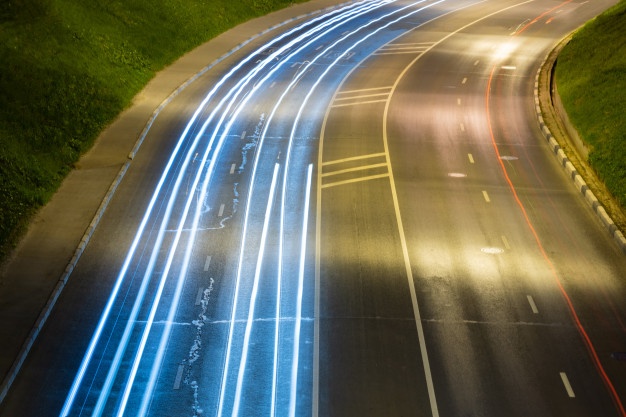Shutter speed is what wishes you to vary after you wish to indicate movement in your image or after you want to require an implausibly clear shot, a flash in time, with none blur of movement in the least. The slower the shutter speed is the additional movement the camera can capture. The 3 main adjustable components of your camera area unit ISO, aperture, and shutter speed. Aperture and shutter speed along area unit what determines exposure as a result of they each have an effect on what quantity light-weight is taken in whereas the image is being taken. The foremost basic definition of shutter speed is however long the shutter takes to open and shut. Your camera’s shutter speed is measured in fractions of seconds. If you set your shutter speed to 1/1000 of a second it'll be abundant quicker than 1/10 of a second. Generally you won’t be employing a shutter speed slower than 1/60 as a result of any slower and you'd embrace motion in your image, creating it muzzy. As you begin exploring the various speeds you'll be able to use detain mind, that you simply use a shutter speed slower than 1/60 you may would like one thing to stabilize your camera, like a stand. Also, there area unit some cameras currently that have a inbuilt image stabilization system to assist your photos not be accomplished by any accidental shakes. If you're making an attempt to require an image with no movement you wish to contemplate however shut you're to the ‘action’ you're taking picture of. The nearer you're thereto the quicker you wish the shutter speed so you won’t miss your shot. For instance, if somebody throws a ball right past your face you hardly see it however if you're a decent distance off you see the ball the complete time. When deciding what you wish your shutter speed to be, you have got to grasp if you wish to check movement within the finished image or if you wish a frozen moment to require with you. Simply keep in mind, the slower your setting, the additional movement and motion you may see in your image. Shutter speed is probably the foremost artistic adjustment obtainable to the digital artist. It permits U.S.A. to freeze action or use motion blur to make a range of effects, and is expressed in seconds or fractions of seconds looking on the length of exposure. A high shutter speed (1/1000 of a second or higher) will freeze even in no time moving objects dead in their tracks. However, you may have to be compelled to keep one or two of things in mind: 1.) You're progressing to would like a bright lit subject as shutter speeds this high do not enable your camera abundant time to collect light-weight for exposure. You’ll be able to get around this to a degree by employing a higher ISO setting, however do not head to high, or noise can creep into your shot. 2.) If potential, discovered your shot by having your camera targeted on the spot wherever your subject goes to go. This can enable you to focus on temporal order your subject's approach, supplying you with a far better likelihood to trip the shutter at simply the correct moment. Medium shutter speeds (1/20 of a second to 1/80 of a second) are often wont to produce motion blur once photographing moving objects. This provides the image a way of life and motion. Here area unit many ways that you'll be able to approach this sort of motion blur: 1.) Together with your camera stationary, trip the shutter as a moving subject passes by. This can build the topic look blurred, whereas keeping the remainder of the shot clear-giving your subject a glance of speed and a way that it's moving out of the shot. 2.) Follow your subject through the finder in a very swish sweeping motion because it approaches, and trip the shutter as your subject goes by-this is named "panning." This methodology can keep your subject comparatively clear; however can blur the background, giving an overall sense of speed and movement. The temporal order for this sort of shot takes somewhat apply, however the results build it well worthy. 3.) Once shooting a stationary subject, by choice move your camera in a very sweeping or circular motion to make a blur of colors and contours. This one may be a ton of fun and may offer some fascinating abstract results. Low shutter speeds (1/8 of a second up to thirty seconds and beyond) are often wont to produce a range of effects-here area unit simply a few: Note: for many of those long exposures a stand or another suggests that of keeping the camera utterly still is critical to avoid making unwitting blur. 1.) Moving water can look swish and glossy once shot at shutter speeds of 1/8 of a second or additional-the longer the exposure the more pronounced the impact. 2.) Once photographed at shutter speeds of two seconds or bigger, automobile lights can develop into long vibrant trails-the longer the exposure, the longer the paths. 3.) Once terribly long exposures area unit used (15 seconds plus) town lights can usually battle a stretched, star-like look. 4.) Photographing town lights at shutter speeds of 1/15 of a second, or so, either from a moving vehicle, or whereas walking, will turn out fascinating and vibrant abstracts (no stand required.) Most digital cameras have a shutter speed priority setting, that permits you to manage the shutter speed-try it-it will open up a full new world, and its numerous fun besides.
What is Shutter Speed?


